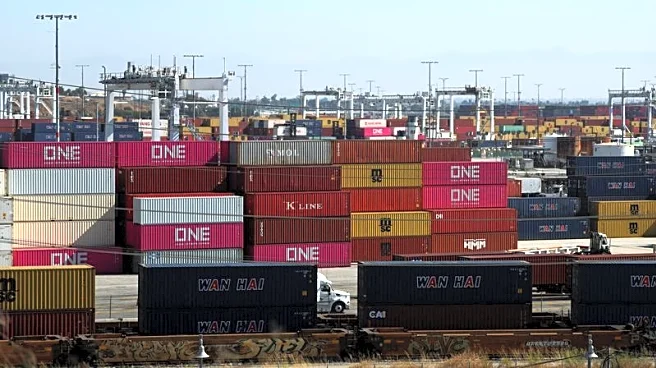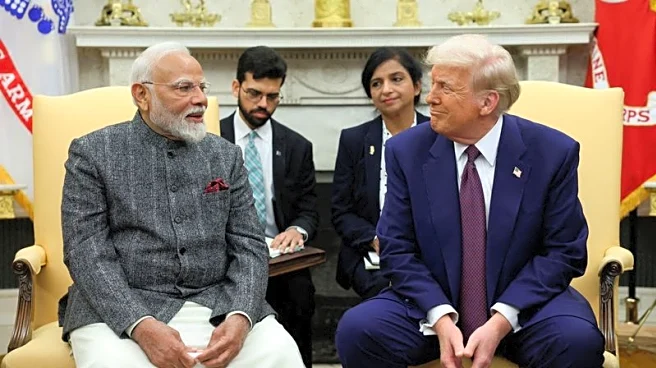What's Happening?
India has announced a reduction in Goods and Services Tax (GST) rates on hundreds of goods, including air conditioners, tea, and school supplies, to boost consumption and mitigate the effects of steep US tariffs. The new rates, effective from September 22, aim to simplify the tax structure and stimulate economic activity during India's festive season. The decision comes in response to President Trump's imposition of 50% tariffs on India, including penalties for purchasing Russian crude oil. The revised GST structure is expected to enhance demand and ease inflation, although it may lead to significant revenue losses for the government.
Why It's Important?
The GST rate cuts are a strategic move to bolster India's economy amid external pressures from US tariffs. By reducing taxes on essential goods, the Indian government seeks to increase consumer spending, which constitutes a substantial portion of the country's GDP. This approach may help offset the economic impact of the tariffs and support domestic industries. However, the potential revenue shortfalls could pose challenges for states reliant on GST income, necessitating careful management to balance growth and fiscal stability.
What's Next?
The implementation of the new GST rates is expected to drive higher sales volumes and potentially improve corporate earnings in the upcoming quarter. As India navigates the economic implications of US tariffs, the government may continue to explore fiscal measures to support growth. The situation also highlights the need for ongoing dialogue between India and the US to address trade tensions and seek mutually beneficial solutions.













